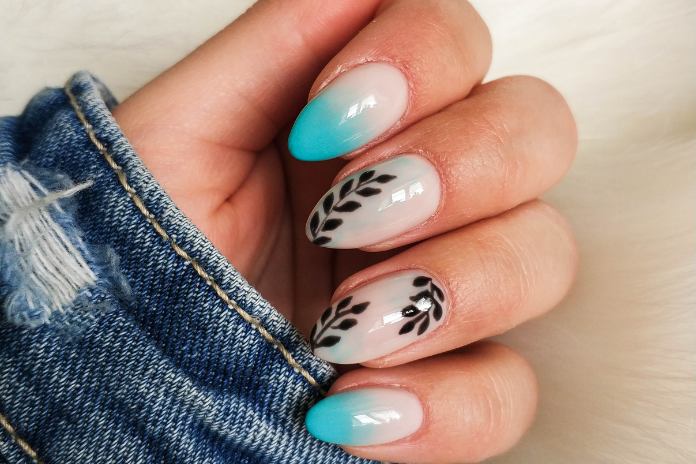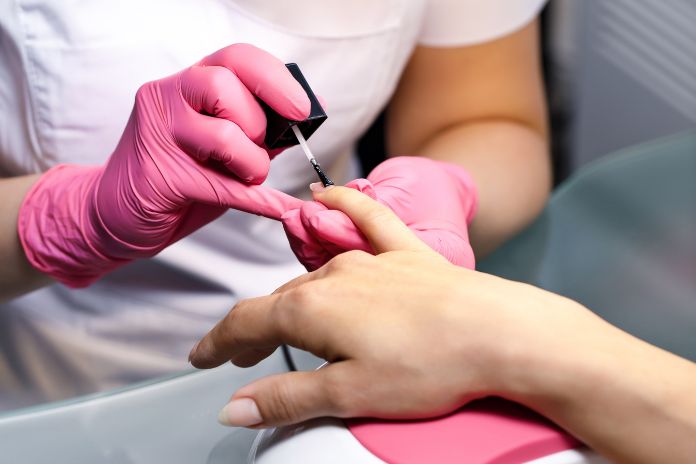If you’ve recently gotten acrylic nails, you may be wondering how long your nails will hurt after the application process. The answer is that it varies from person to person, but generally, your nails should only hurt for about 24 hours. However, if you’re experiencing soreness beyond that timeframe, it could be a sign of a more serious issue.
One reason your nails may hurt after getting acrylics is due to the filing process. When the technician applies the acrylic, they will likely need to file down your natural nails quite a bit to ensure a smooth application. This filing can be rough on your nails and may cause some pain or soreness. Additionally, if your nails are filed down too short, it can cause discomfort and even damage to the nail bed.
The Acrylic Application Process
Getting acrylic nails involves a multi-step process that can take up to an hour or more. The process involves applying a thick, durable acrylic mixture to your natural nails in order to create a hard, long-lasting surface. Here is what you can expect during the application process.
What to Expect During the Application Process
-
Nail Preparation: Before applying acrylic, your natural nails will be cleaned, shaped, and buffed to provide a smooth surface for the acrylic to adhere to. The technician may also push back your cuticles and remove any dead skin.
-
Application of Primer: A primer will be applied to your nails to help the acrylic adhere better. The primer contains chemicals that can be harsh on your nails, so it’s important to ensure that the technician is using a high-quality product.
-
Acrylic Application: The technician will begin applying the acrylic mixture to your nails, starting at the base and working their way up to the tips. They will use a brush to shape the acrylic and ensure that it is evenly distributed. This process may take several coats to achieve the desired thickness.
-
Drying and Filing: After the acrylic has been applied, it will need to dry completely before it can be filed and shaped. The technician may use a fan or a UV lamp to speed up the drying process. Once the acrylic is dry, it will be filed and shaped to your desired length and shape.
-
Finishing: Once your nails have been shaped and filed, the technician will apply a topcoat to give your nails a glossy finish. This will help protect the acrylic and prevent it from chipping or peeling.
During the application process, you may experience a slight burning or tingling sensation as the chemicals in the primer and acrylic mixture interact with your natural nails. This is normal and should subside within a few minutes. If you experience any pain or discomfort during the process, be sure to let your technician know immediately.
Overall, the application process for acrylic nails can be time-consuming, but the result is a durable, long-lasting manicure that can last up to several weeks with proper care.
Aftercare and Maintenance Tips
After getting acrylic nails, it is important to take proper care of them to prevent any damage or infections. Here are some tips to help you maintain your acrylic nails and keep them healthy.
Preventing Infection
To prevent infections, it is important to keep your nails clean and dry. Avoid exposing them to moisture for extended periods of time, and always wear gloves when doing household chores that involve water. If you notice any signs of infection, such as redness, swelling, or pus, seek medical help immediately.
How to Care for Your Acrylic Nails
To care for your acrylic nails, it is important to avoid using them as tools to open things or pick at objects. This can cause them to break easily or chip. Instead, use your fingertips or a tool to do these tasks. Also, avoid applying pressure to your nails, as this can cause soreness and discomfort.
Nail Health and Nutrition
To maintain healthy nails, it is important to have a balanced diet that is rich in nutrients such as biotin, keratin, and other vitamins and minerals. Additionally, it is important to keep your nails moisturized by applying cuticle oil regularly. This helps to prevent dryness and promotes nail health.
Removal
When it is time to remove your acrylic nails, it is important to do so properly to avoid damage to your natural nails. Avoid ripping them off, as this can cause your natural nails to become thin and sore. Instead, soak your nails in warm water or acetone to loosen the nails, and then use a cuticle pusher to gently remove them. Alternatively, you can seek the help of a professional nail technician.
Overall, taking proper care of your acrylic nails can help to prevent soreness, infections, and damage to your natural nails. By following these tips, you can maintain healthy and beautiful nails.
Potential Risks and Allergic Reactions
Getting acrylic nails can be a great way to enhance the look of your nails, but it’s important to be aware of the potential risks and allergic reactions that can occur. Here are some things to keep in mind:
Signs of Allergic Reactions
Some people may experience an allergic reaction to the chemicals used in acrylic nails. Signs of an allergic reaction can include:
- Redness, swelling, or itching around the nail bed
- Pain or tenderness around the nail bed
- Blistering or oozing around the nail bed
- Changes in the color or texture of the nail
If you experience any of these symptoms, it’s important to seek medical help right away. Allergic reactions can be serious and may require treatment to prevent further damage.
How to Deal with Allergic Reactions
If you do experience an allergic reaction to acrylic nails, there are a few things you can do to help alleviate the symptoms:
- Remove the acrylic nails immediately
- Clean the affected area with soap and water
- Apply a cold compress to reduce swelling and pain
- Use over-the-counter antihistamines to help relieve itching and other symptoms
It’s important to avoid using any products that may further irritate the affected area, such as nail polish or other chemicals. If your symptoms persist or worsen, seek medical help right away.
In addition to allergic reactions, getting acrylic nails can also cause damage to the nail bed if not done properly. It’s important to choose a reputable salon and technician who is experienced in applying acrylic nails. Be sure to ask about their training and experience before getting your nails done.
Overall, getting acrylic nails can be a great way to enhance the look of your nails, but it’s important to be aware of the potential risks and to take steps to protect yourself. If you experience any signs of an allergic reaction or other symptoms, seek medical help right away.
Removal Process
If you have decided to remove your acrylic nails, it is important to do it safely to avoid damaging your natural nails. Here are some steps you can follow to safely remove your acrylic nails.
How to Safely Remove Acrylic Nails
-
Soak your nails in 100 percent acetone: Pour acetone into a bowl and soak your nails for 10-15 minutes. You can also use cotton balls soaked in acetone and wrap them around your nails with aluminum foil.
-
Gently remove the acrylic: After soaking, use a cuticle pusher to gently remove the acrylic from your nails. Be careful not to scrape too hard or you may damage your natural nails.
-
Buff your nails: After removing the acrylic, use a nail buffer to smooth out any rough spots on your nails. This will help prevent your nails from breaking easily.
-
Apply cuticle oil: Your nails may be dry after removing the acrylic, so it is important to apply cuticle oil to moisturize them.
-
Apply clear nail polish or gel polish: Applying clear nail polish or gel polish can help protect your nails and prevent chipping. Make sure to let the polish dry completely before doing any activities that may cause your nails to chip.
It is important to note that your nails may feel sore or sensitive after removing the acrylic, but this should go away within a few days. If your nails are still sore after a week, you should consult a nail technician or a doctor.
Remember to always remove your acrylic nails safely to avoid damaging your natural nails.

